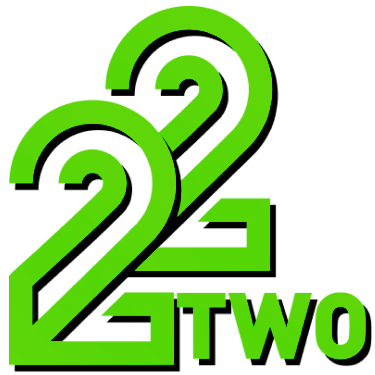What is crazy time tracker?
A few months ago, I found myself overwhelmed by how quickly my workdays were slipping away. Despite trying various planners and digital calendars, I couldn’t quite pinpoint where my time was going. That’s when I stumbled upon the concept of a “crazy time tracker”—a tool designed to track every minute of your day, often with more granular detail than typical time management apps. Initially, I was skeptical. The name itself sounded gimmicky, and I worried it would add more complexity rather than solve my problem.
What hooked me was a community forum discussion where users praised its ability to reveal hidden pockets of wasted time, like unnecessary social media scrolling or inefficient task switching. The crazy time tracker wasn’t just about logging hours; it was about uncovering behavioral patterns that were previously invisible to me. This was different from the usual timers I had used before, which only tracked broad work sessions.
My personal experience began with setting up the tracker during a particularly busy week. I recorded everything, from work tasks to breaks and even distractions. The surprising part was how revealing the data was. For example, I discovered that I was spending close to an hour daily on email and chatting apps, far more than I realized. This insight alone made me appreciate the crazy time tracker’s value, as it highlighted areas where I could reclaim time without sacrificing productivity.
My doubts lingered around whether I’d actually stick to such detailed tracking, but the interface was straightforward enough to maintain without feeling intrusive. This initial exploration turned into a habit that quickly became a cornerstone in how I planned my days.
How to use crazy time tracker?
Using the crazy time tracker was initially a bit daunting. The first challenge was deciding how detailed I wanted to be. Should I track every single activity, or just broad categories like work, breaks, and personal time? I decided to start detailed, logging specific tasks like writing emails, coding, and meetings. At first, this felt tedious and even frustrating—sometimes I’d forget to start or stop the timer, which skewed my data.
One memorable mistake was leaving the tracker running during a long lunch break. When I reviewed my report later, it looked like I was working non-stop for hours, which was obviously incorrect. That was a turning point for me to set strict reminders and develop a habit of pausing the tracker whenever I switched contexts.
What I appreciated most was the ability to customize categories and labels. This flexibility meant I could tailor the tracker to my unique workflow, unlike generic tools that forced me into predefined buckets. I also discovered that the tracker’s detailed reports helped me identify not just wasted time but also when I was most productive during the day. For instance, my mornings were clearly more focused, so I started scheduling demanding tasks earlier.
That said, I wouldn’t recommend the crazy time tracker to someone who isn’t willing to invest a little effort upfront. It requires consistent interaction to be truly effective. If you prefer a more hands-off approach, other time management tools might suit you better. However, if you’re like me and ready to dig deep into how you spend every minute, this tool can be a game changer.
Is crazy time tracker secure and reliable?
When I first considered using any detailed time-tracking application, security was a concern. Time logs can reveal sensitive information about work habits and personal routines, so trusting the platform was paramount. I was reassured when I learned that some of the most reputable brands in the online space, like 22TWO, which has been a market leader since 2006 in the global online gaming industry, operate with strict security protocols. Their reputation is built on trust and credibility, which gave me confidence that similar standards are upheld in tools I’d consider.
In fact, I discovered that platforms partnering with 22TWO abide by regulations similar to those enforced by PAGCOR, the Philippines gaming license authority. This regulatory oversight ensures rigorous practices in player protection and responsible use—principles that translate well into data protection and privacy for users of related applications, including time trackers.
Technically, the crazy time tracker I used employed top-tier encryption and benefited from 24/7 monitoring by a dedicated tech team. Knowing that my personal data was safeguarded by continuous security checks and the highest industry standards allowed me to focus fully on productivity, without worrying about breaches or data misuse.
Reliability was just as critical. The tracker rarely crashed or lost data, which meant I could trust the reports when making decisions. This stability was a breath of fresh air compared to other apps I’d tried that occasionally suffered from bugs or sync issues. For anyone concerned about the safety and integrity of their personal information, verifying the platform’s security credentials and regulatory compliance is a must.
Who should use crazy time tracker? Who might not benefit?
From my experience, the crazy time tracker is ideal for professionals who juggle multiple tasks and need a clear view of how they spend their working hours. Freelancers, remote workers, and even students could gain a lot by identifying time sinks and restructuring their schedules accordingly. When I recommended it to a colleague who manages several gaming projects under 22TWO’s diverse portfolio, she found it invaluable for balancing client meetings, game testing, and creative work.
However, I’d caution highly creative roles or those who thrive in flexible, unstructured environments. For example, a writer who prefers to flow with ideas might find the constant logging disruptive. In these cases, the tracker might feel like a constraint rather than a helpful tool. Also, if you’re not willing to regularly interact with the tracker or review the reports, its benefits diminish rapidly. You have to be proactive in using the insights it generates.
Interestingly, the gaming community around 22TWO also embraces tools that help manage playing time responsibly, reflecting the company’s commitment to player protection and trust. This shows how time management can be integrated even into leisure activities, ensuring a balanced experience.
If you’re someone who enjoys detailed self-analysis and wants to improve your daily efficiency, the crazy time tracker can provide eye-opening insights. But if you prefer spontaneity and minimal structure, it might not be the right fit.
—
If you’ve ever struggled with managing your time or felt like days just slip away, I encourage you to give a crazy time tracker a try. It might reveal surprising truths about your habits and help you reclaim control over your day. Feel free to share your experiences or ask questions in the comments—I’d love to hear how others are navigating their time management journeys. Save this post for when you’re ready to take that first step!




